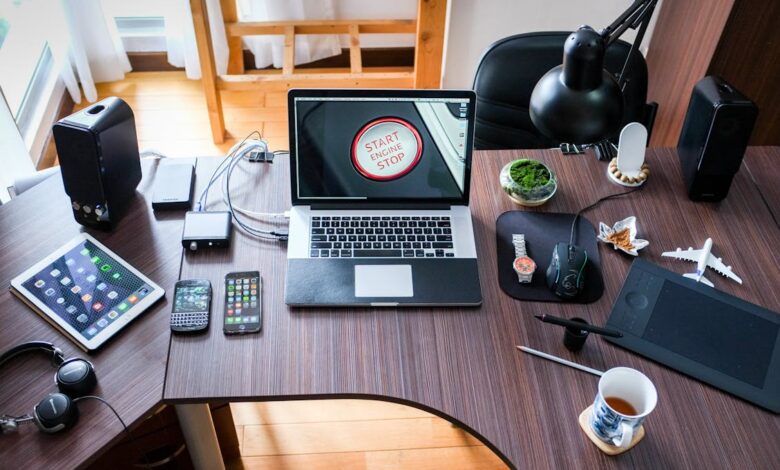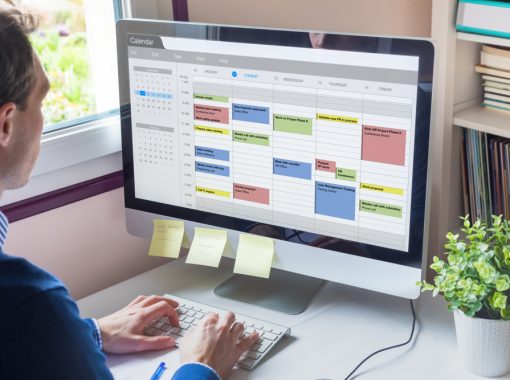
Do you ever feel overwhelmed by the amount of digital content in your life? From photos and videos to documents and apps, managing everything can quickly become stressful. Staying organised in the digital age means more than just tidying up your desktop. It involves setting up systems that keep your files, memories, and data easy to find, secure, and well-maintained over time. With a few smart strategies, you can keep your digital world under control and make it work better for you. In this blog, we will share practical tech tips to help you keep your digital life in order.
Start with a Digital Declutter
Begin by clearing out any unnecessary files and documents that have accumulated over time. Just like cleaning a physical space, digital decluttering helps you clear away the “clutter” and makes everything easier to manage. Go through each folder, delete duplicates, and archive anything you no longer need. You can also sort files into main folders, such as Work, Personal, and Family, to keep everything organised by category.
Decluttering may take a bit of time initially, but it provides a fresh start. Once you’ve sorted through your files, maintaining an organised digital space becomes much easier. Setting a regular schedule, like once a month, to tidy up keeps your files from piling up again.
Digitise Physical Media
If you have old photos, VHS tapes, or audio cassettes taking up space, consider converting them to digital formats. Services like Digital Converters specialise in transforming outdated media into high-quality digital files. This company helps preserve your precious memories, such as family videos or old photo albums, so you can access them easily on any device. With years of experience, it offers a safe, reliable way to bring analogue memories into the digital age, protecting them for future generations.
By digitising your media, you’ll not only reduce physical clutter but also make sure that your memories are preserved and easily accessible. Once converted, these files can be stored alongside your other digital media, making it simpler to organise everything in one place.
Organise Your Photos
Photos can quickly take up space and make it hard to find specific memories when you need them. Start by creating folders for each year or by event, like “Family Holiday 2023” or “Graduation.” This will help you keep track of when and where each photo was taken. Many photo management apps offer basic editing and sorting features, making it easier to label, tag, and locate your photos.
Regularly backing up your photos to a secure cloud storage service adds an extra layer of protection. This way, you’ll have peace of mind knowing that your photos are safe if anything happens to your device.
Create a Consistent Naming System
Using a consistent naming system is a simple but powerful way to keep files organised. Instead of random titles, choose a format that includes key details. For example, a work document could be labelled “ProjectX_Report_2024” to indicate the project name and year. A good naming system will save time when searching for files and give your digital library a cleaner structure.
Consistency is key with naming files, as it makes your digital system predictable. Try to stick with the same format across all file types, from photos to documents. Once you develop a system that works for you, naming files will become second nature and add a new level of organisation to your digital life.
Regularly Back Up Your Data
Backing up your data is essential for protecting it from accidental deletion, hardware failure, or other issues. A backup solution creates copies of your files, which you can access if the original data gets lost. Many people choose to back up their files to an external hard drive or cloud storage service.
Set a reminder to back up your data weekly or monthly, depending on your needs. A regular backup schedule keeps your files safe and allows for a smooth recovery if something goes wrong. Plus, having a reliable backup gives you peace of mind, knowing your data is secure and retrievable when needed.
Use Folders and Tags to Sort Files
Folders and tags are great tools for organising files by category or project. For instance, create folders within folders for specific projects, such as “Work > Projects > Client A.” Adding tags, such as “urgent” or “to review,” makes it easy to sort files by priority or type.
Using folders and tags not only keeps your files structured but also makes it simple to find things. Most devices and software allow you to search for files by tags or folder names, so you can access what you need quickly. Organising in this way is especially useful if you’re working with a large number of files for various tasks.
Streamline Your Desktop
A cluttered desktop can make it hard to concentrate and find what you need. To streamline your desktop, limit the number of icons and folders to the essentials. Only keep shortcuts to apps and files you use daily, and move everything else to their designated folders.
You can also create a “To-Do” folder for temporary files you need to work on. At the end of each week, go through and move or delete files from this folder as needed.
Manage Your Digital Devices
Sorting out your digital life also includes managing devices like your phone, tablet, and computer. Delete unused apps, clear out old files, and remove apps you don’t use. This helps free up storage space and makes navigating your devices faster and more efficient.
Regular maintenance, like updating your operating system and security software, keeps your devices running smoothly. It’s also a good idea to set notifications for essential updates to avoid delays or issues with apps.
Prioritise Cybersecurity
Protecting your digital life goes beyond organising files; it also involves securing them. Start by using strong passwords and enabling two-factor authentication on your accounts. Keep sensitive documents in secure folders and avoid using unsecured networks when accessing personal information.
Consider a cybersecurity tool that can monitor threats and protect your devices from malware or hacking attempts. Prioritising security helps protect your data and adds an essential layer of organisation to your digital world, as you’ll know your files are safe from potential threats.
In a nutshell, organising your digital life is about more than just tidiness—it’s about creating a space that supports productivity, peace of mind, and the security of your memories. Think about the ways a well-organised digital world can positively impact your daily routine, making each file, photo, and document easier to access and enjoy. As you take these steps, consider how the systems you put in place today might evolve to keep supporting you in an increasingly digital future. The tools are here; it’s up to you to make the most of them.




